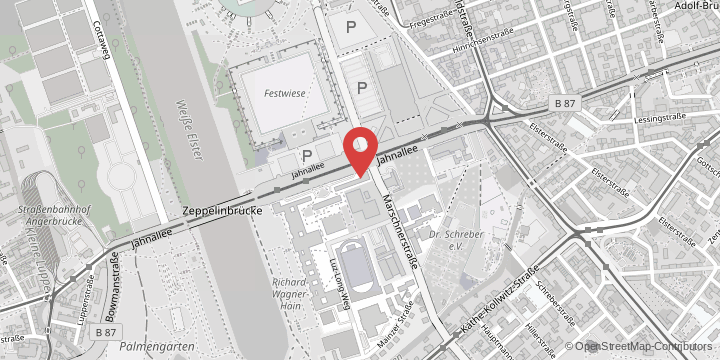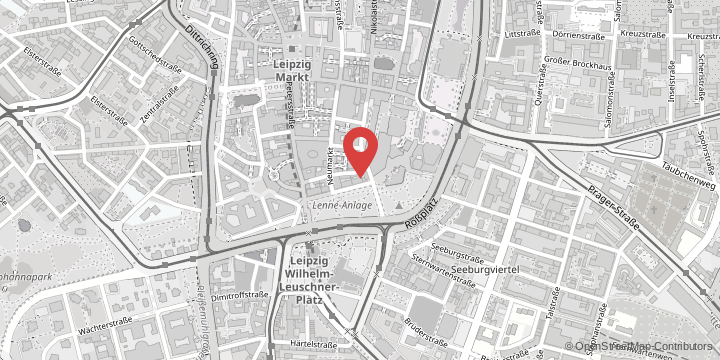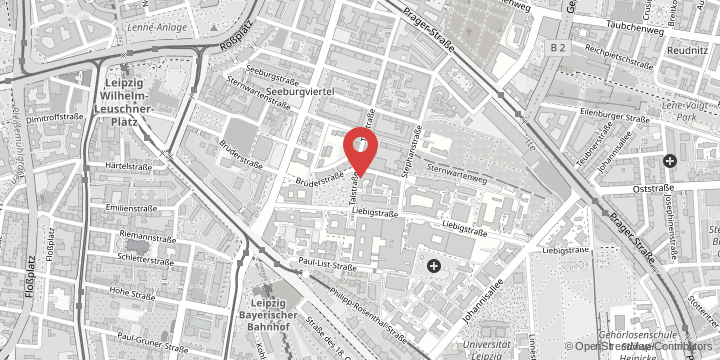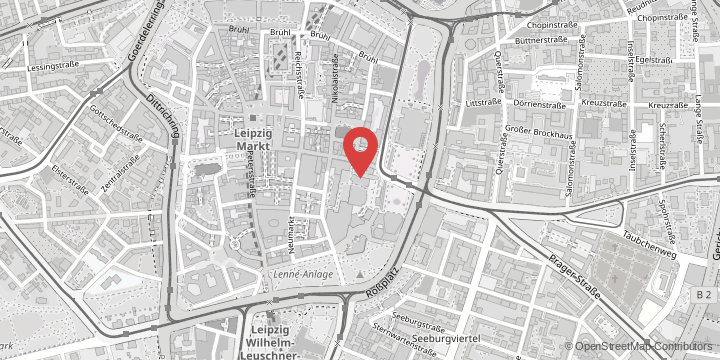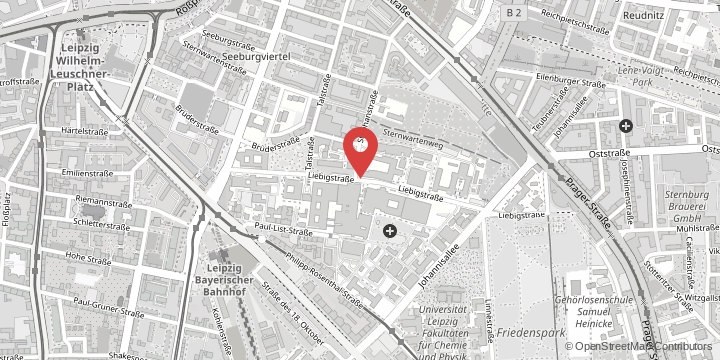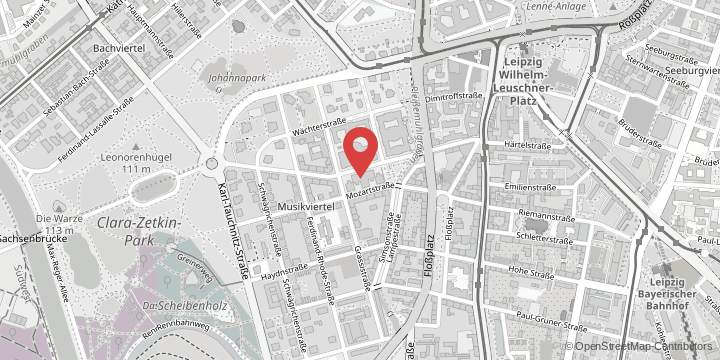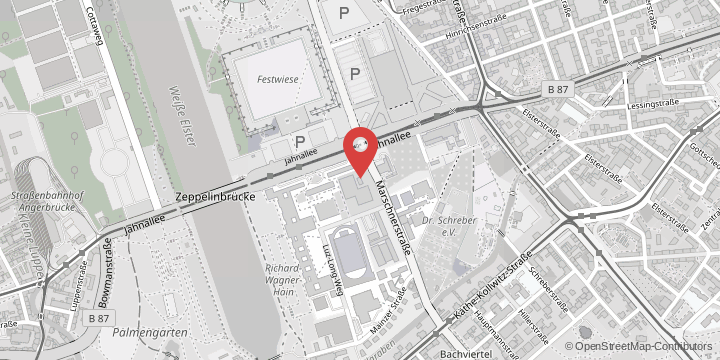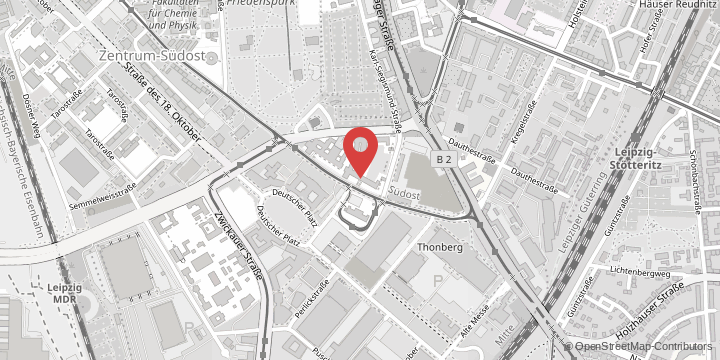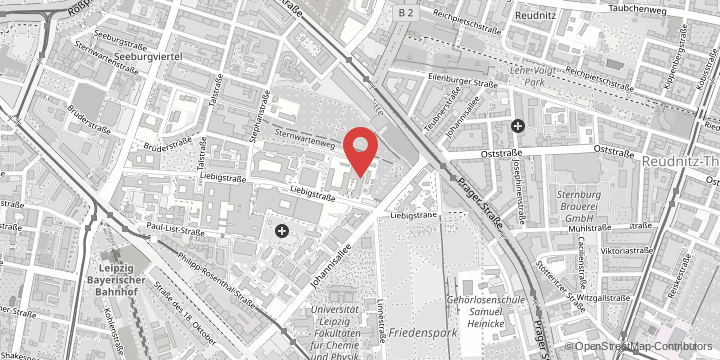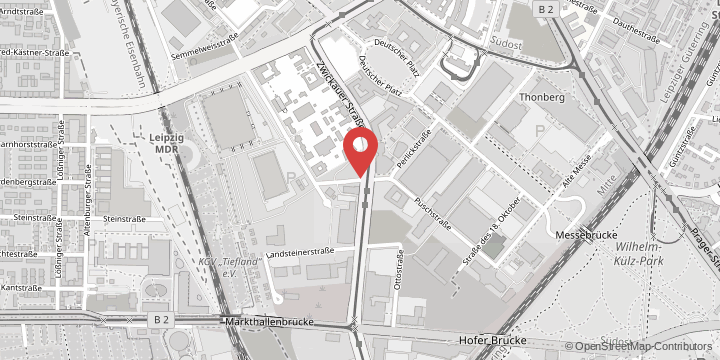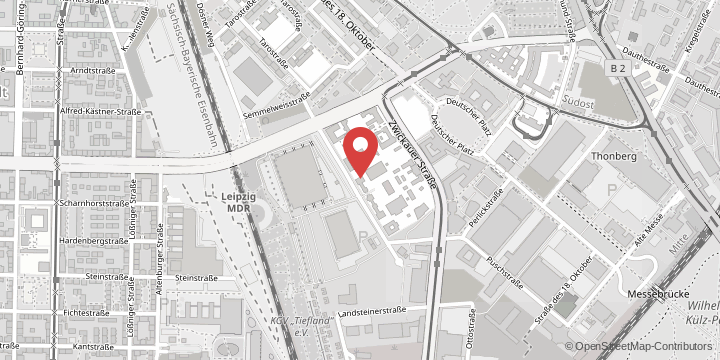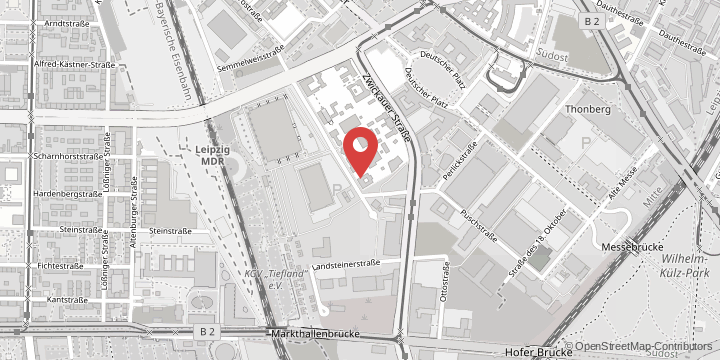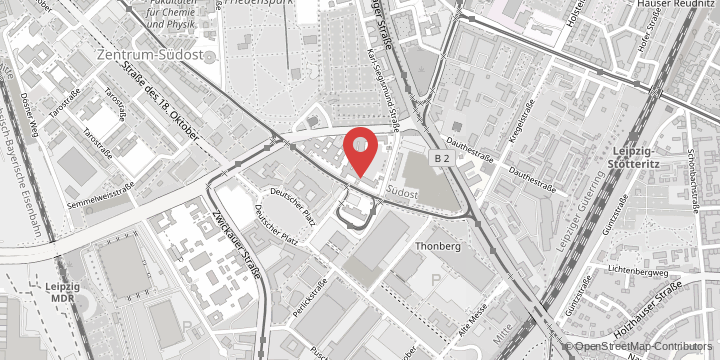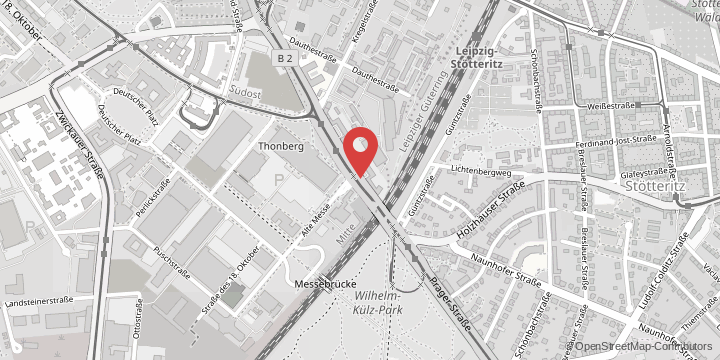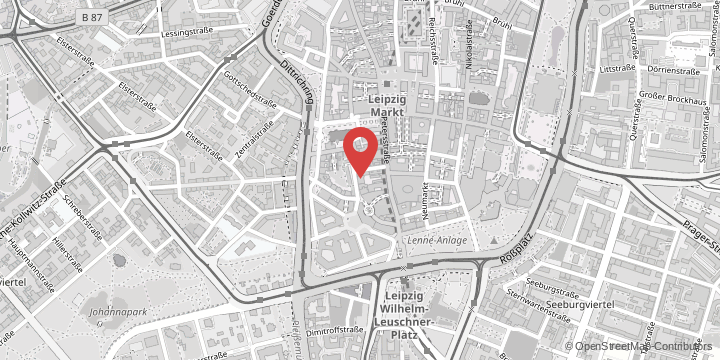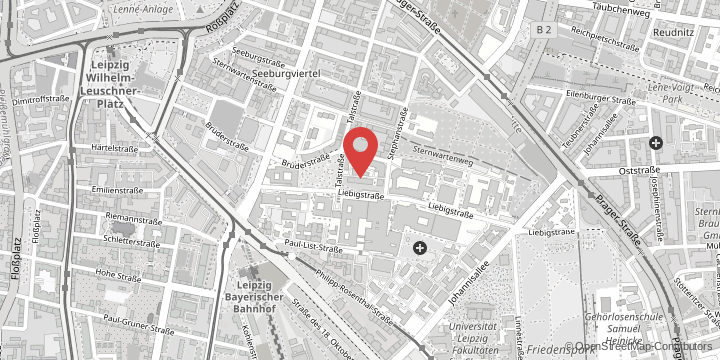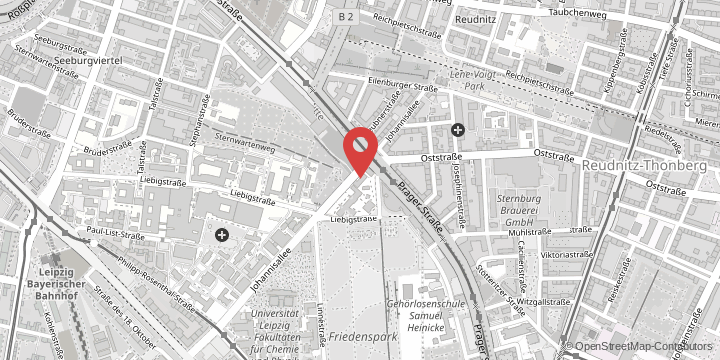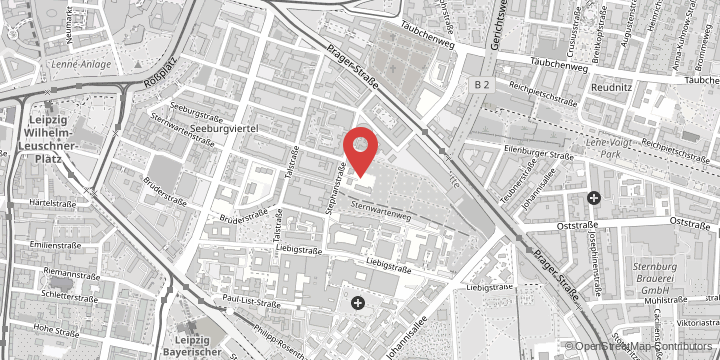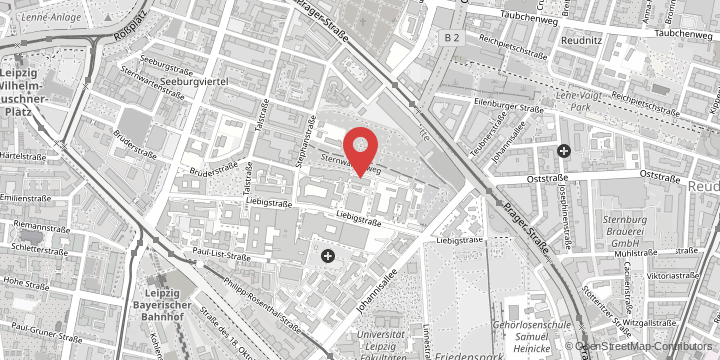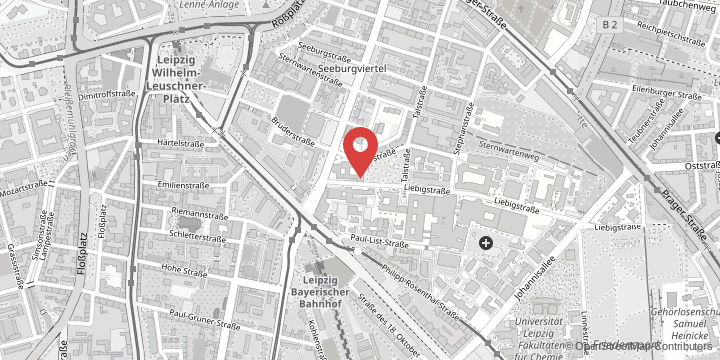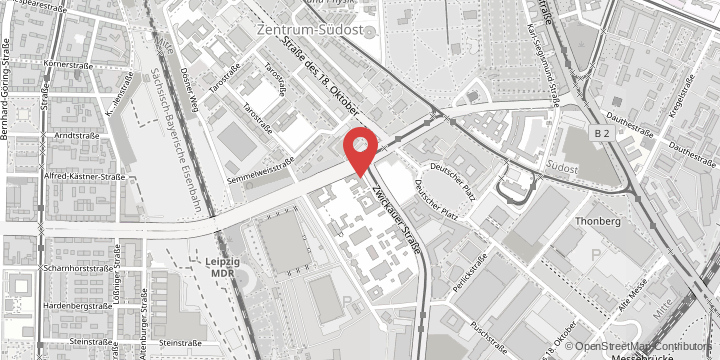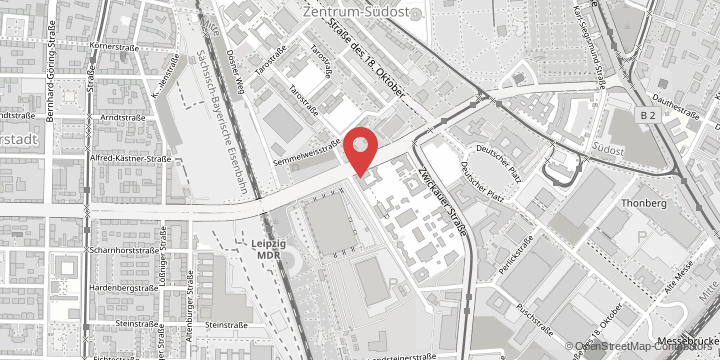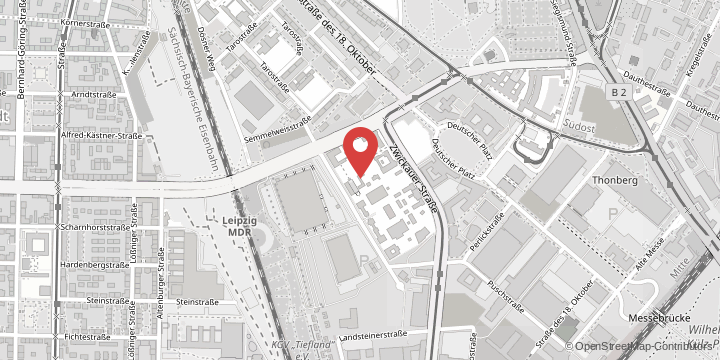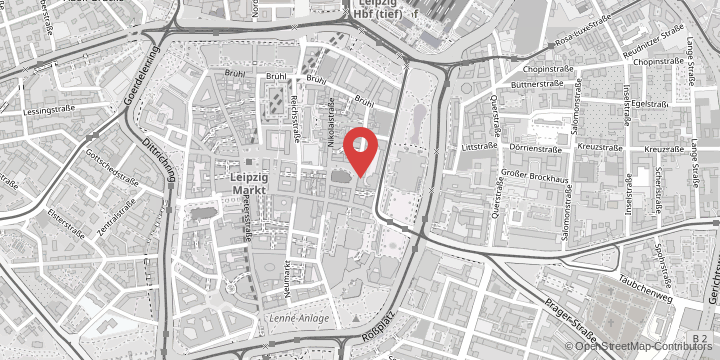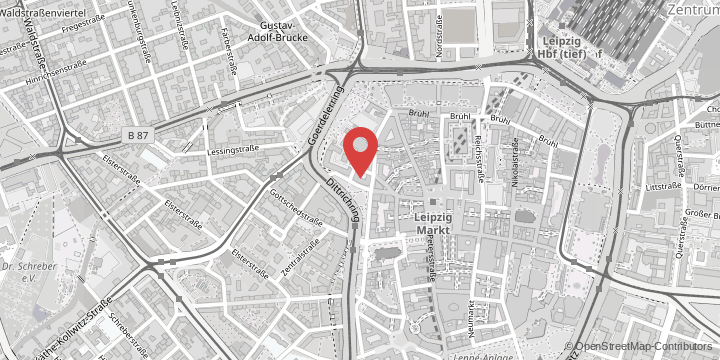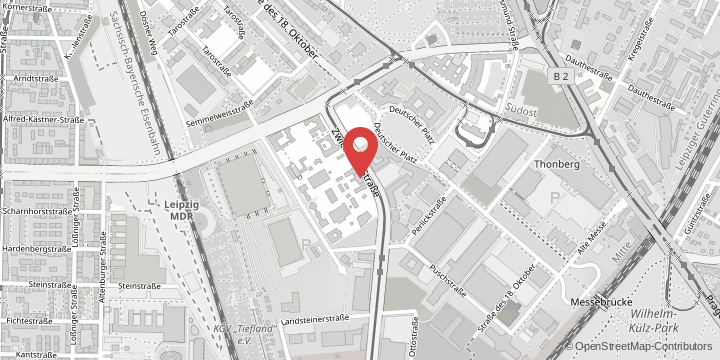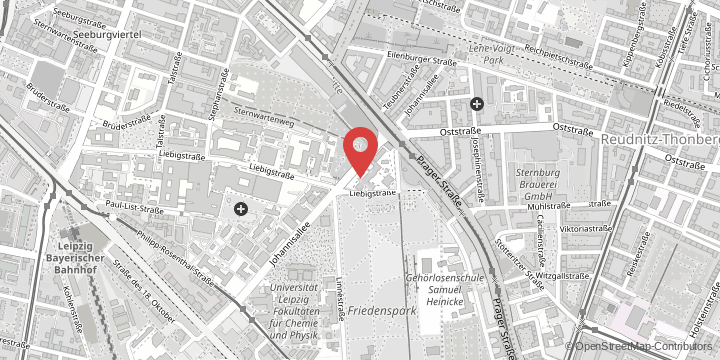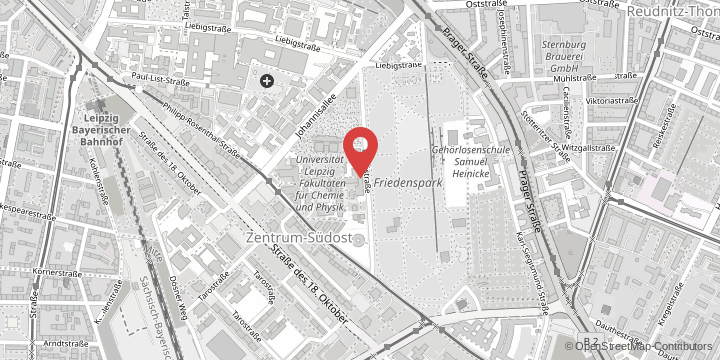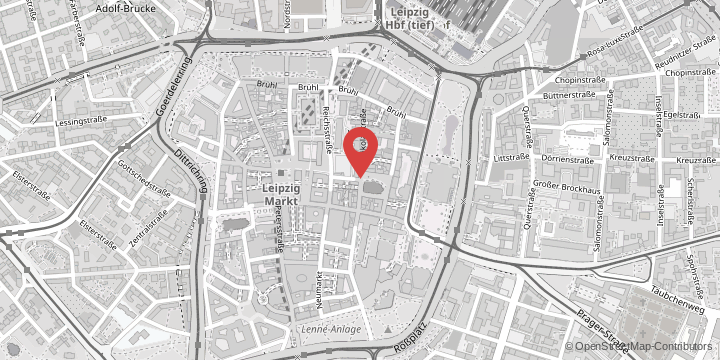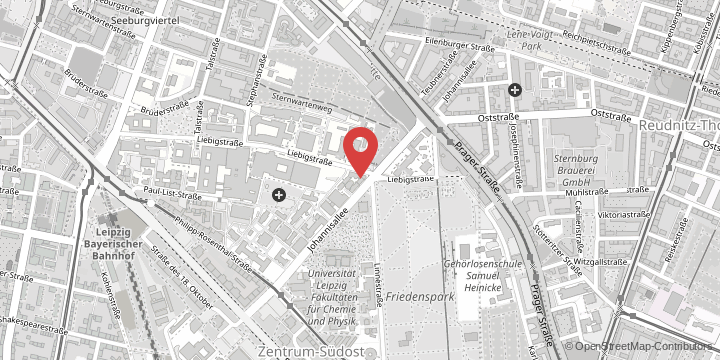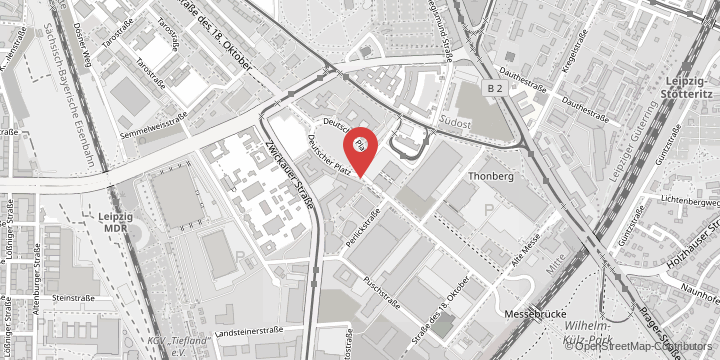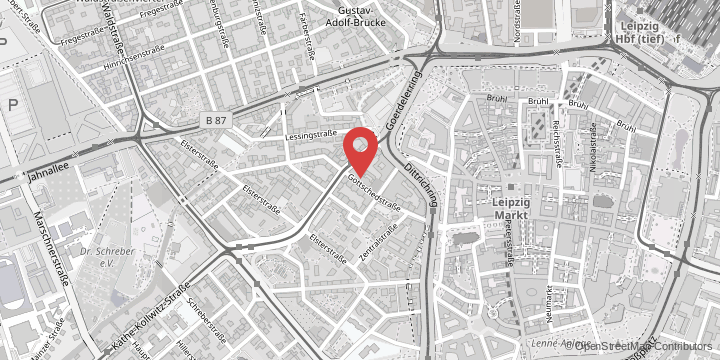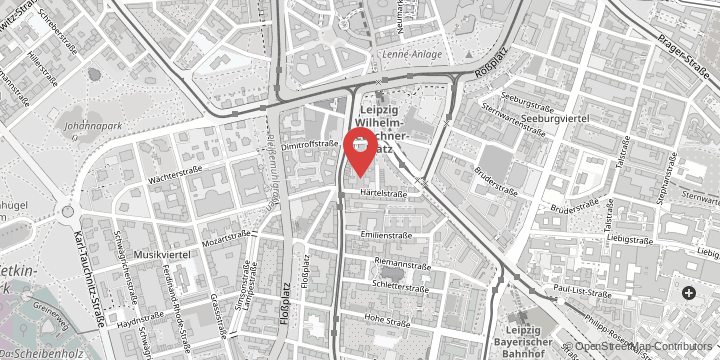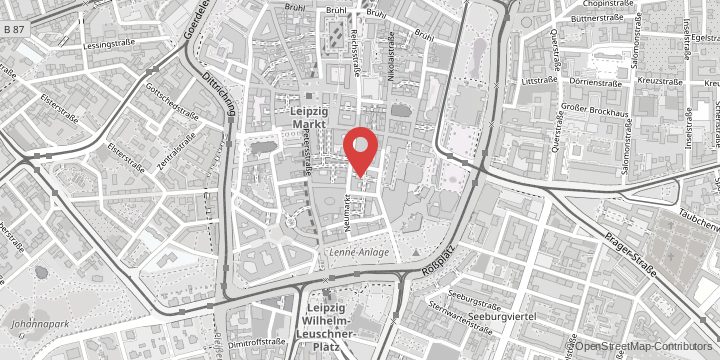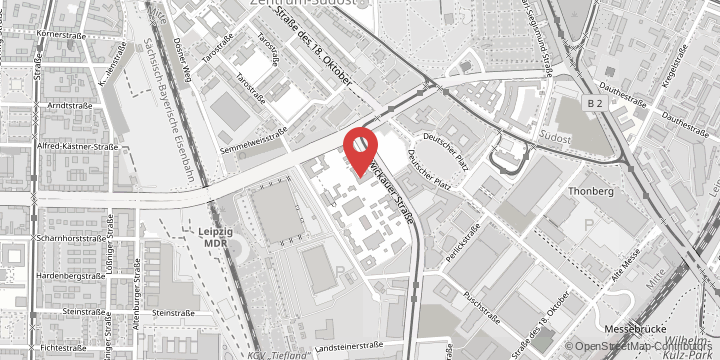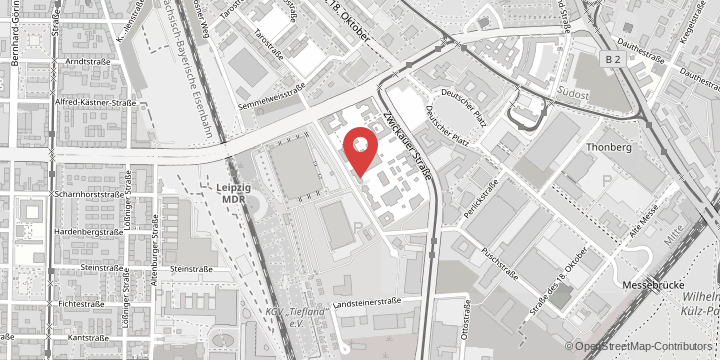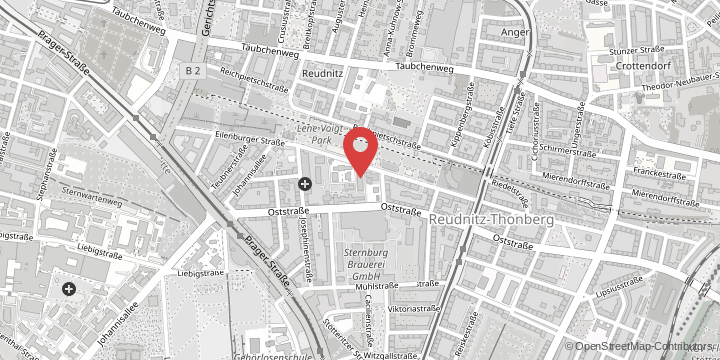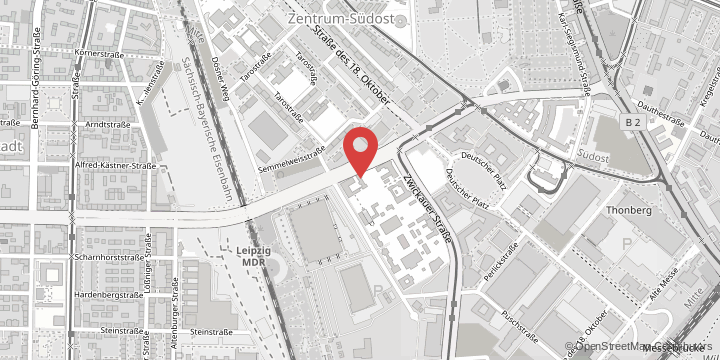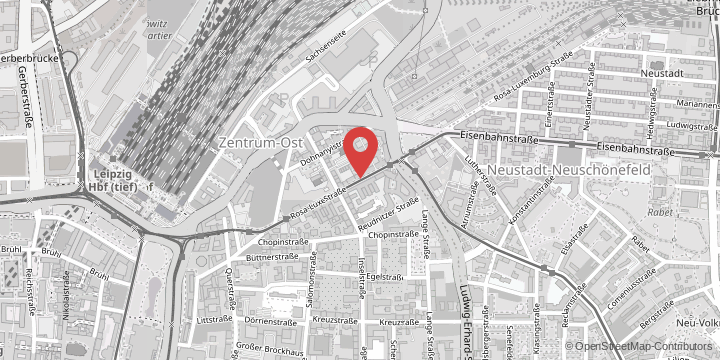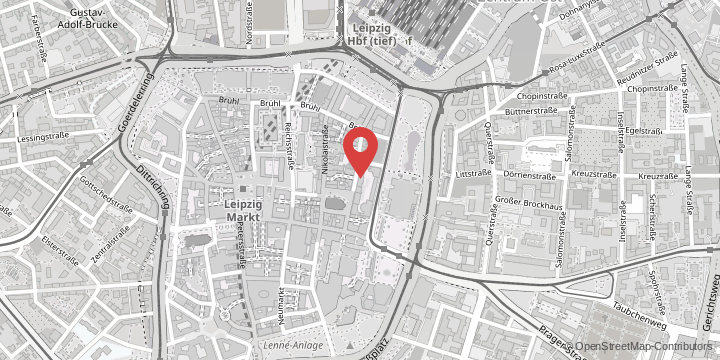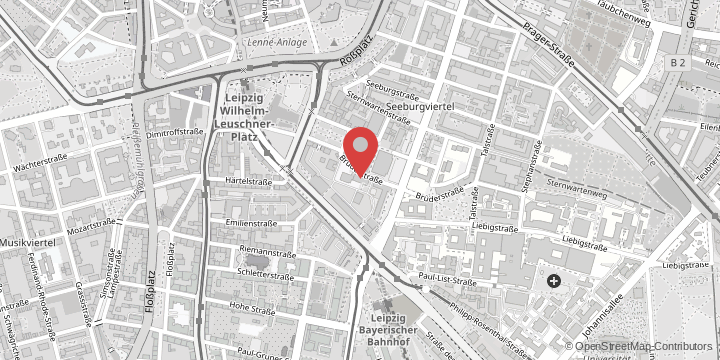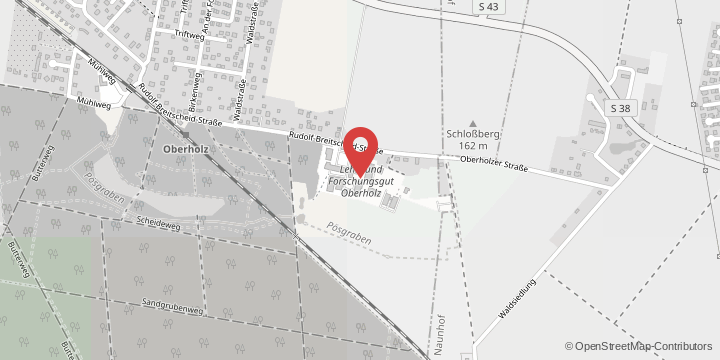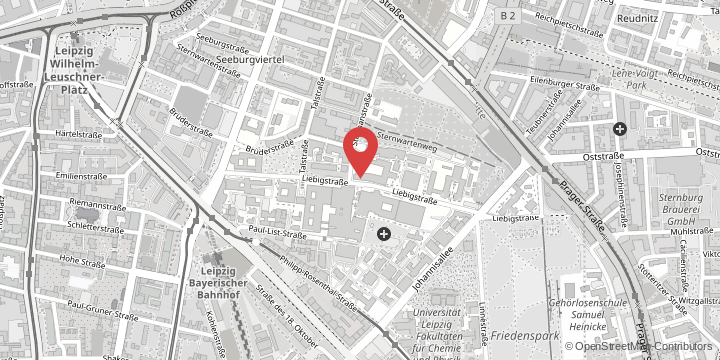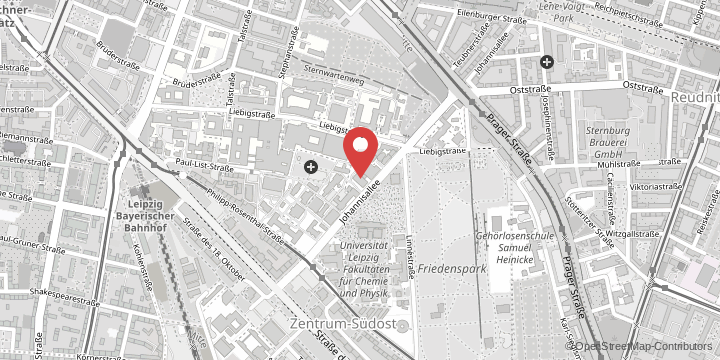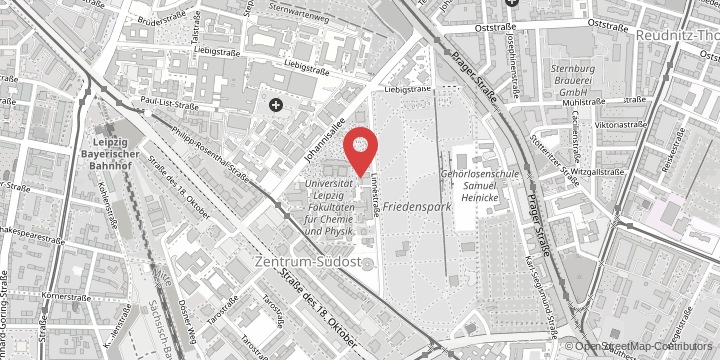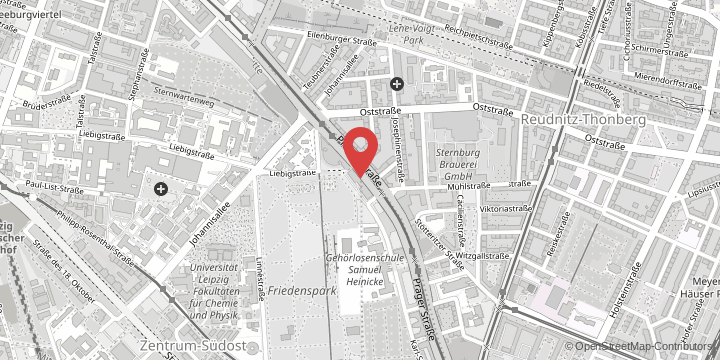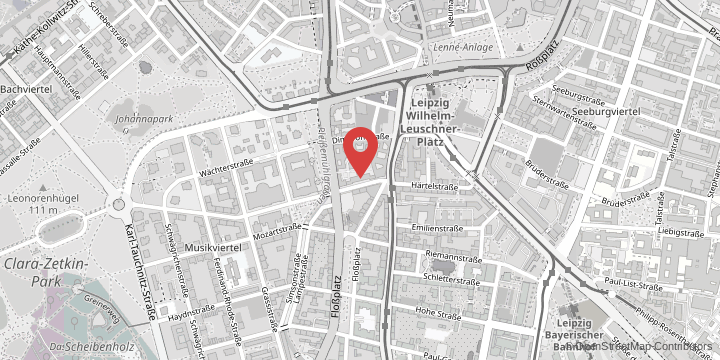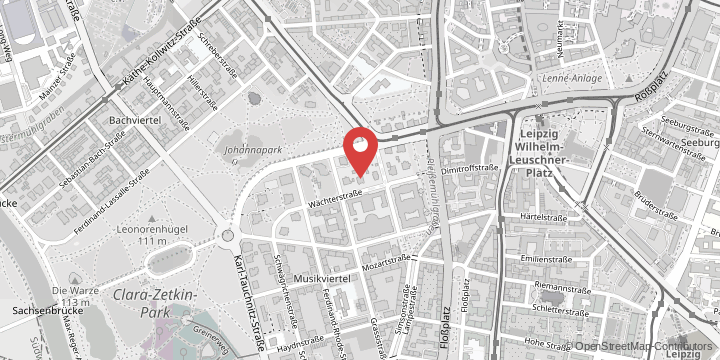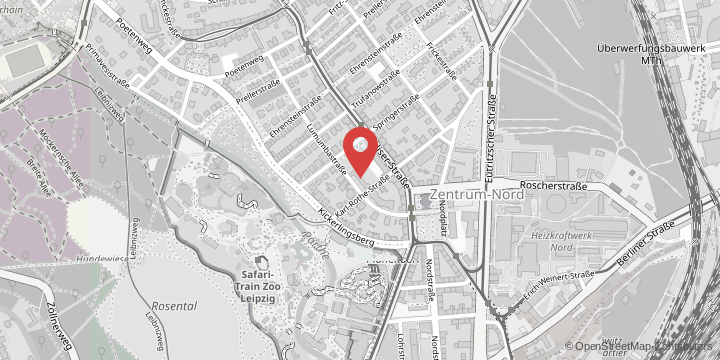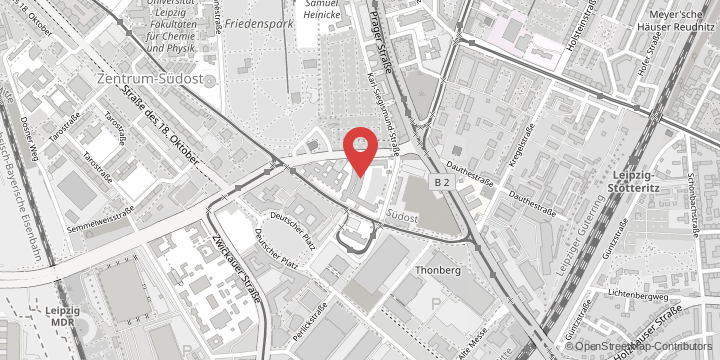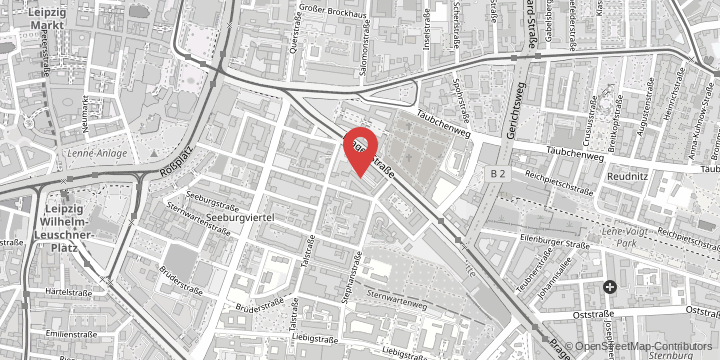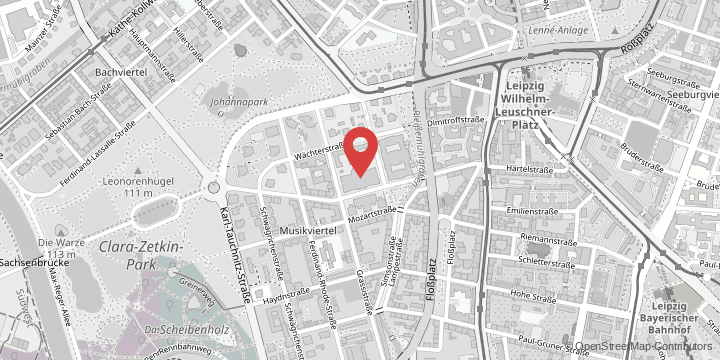Leipzig University provides guest apartments for visiting professors and researchers as well as scholarship holders. The "Werner-Heisenberg-Haus", an International Meeting Center (IBZ), is a modern building loved for its leafy location. The new building can be found at an idyllic spot beside the entrance to the Friedenspark, halfway between the city centre and the Monument to the Battle of the Nations. Our university's various campuses are easily accessbile from here.
Facilities
The IBZ has 24 furnished apartments (with fitted kitchen, television, internet access and university telephone link). There are:
- six one-room apartments
- twelve two-room apartments
- six three-room apartments.
For your convenience there are also underground parking spaces, a laundry and drying room, a bicycle room, a table tennis table, and a children’s playground outside.
The ground floor has a conference room and a club room with a grand piano. With a variety of seating, the bright foyer is designed as an open meeting room. The building also boasts an Italian-style atrium; from its glass roof hangs the sculpture “Chimborazo” (artists: Michael Lukas and Tobias Wittenborn), a reference to Alexander von Humboldt’s travels.
All apartments are non-smoking.
Application
If you want to apply for an apartment at "Werner-Heisenberg-Haus", please first fill in our registration form and send it via email to the guest house management.
Pictures of a typical three-room apartment
Accessibility
The IBZ is located near the Ostplatz stop and can be reached by tram lines 4 and 15. When using public transport, please also take note of the information provided by Leipzig’s public transport provider (LVB).
If you are arriving by car, drive east along Prager Straße to Ostplatz and then turn right onto Johannisallee. After about 200 metres turn left to the guest house.
In 1927, Werner Heisenberg (1901–1976) – the famous German physicist and Nobel Prize winner – became the youngest professor in Germany when he was appointed director of Leipzig University’s Institute of Theoretical Physics.
Idyllic surroundings
The Werner Heisenberg House is located in charming southeastern Leipzig. The Friedenspark and the University’s Botanical Garden are perfect for peaceful strolls, but the city centre is also not far away. You can look around the International Meeting Centre’s immediate surroundings online.
A beautiful park in the heart of Leipzig, the Friedenspark borders directly on the guest house. It stretches between Prager Straße and Philipp-Rosenthal-Straße from Ostplatz and Linnéstraße almost to the German National Library at Deutscher Platz. In addition to footpaths, a large playground and various sports areas, the Friedenspark is characterised above all by its invaluable collection of well-established trees, including a number of rare honey locusts.
Leipzig is full of remarkable historic places; the Friedenspark is one of them. The park was inaugurated and given its current name to mark the 7th GDR Gymnastics and Sports Festival in the summer of 1983. The park grounds were originally the site of the Neuer Johannisfriedhof cemetery, which was opened on 30 September 1846 as an extension of the Alter Johannisfriedhof – a cemetery which still exists today and is well worth seeing, with graves dating back to the 17th and 18th centuries. In the 19th and 20th centuries, the Neuer Johannisfriedhof also served as a final resting place, with places of honour for famous citizens of Leipzig. It was also home to three war memorials commemorating the war years 1866 and 1870/71. The cemetery was destroyed by air strikes during the Second World War. Despite its rather morbid past, the park is very popular today, with plenty of visitors enjoying its 18.6 hectares and extensive network of footpaths.
Our university’s Botanical Garden is located on the edge of the Friedenspark and very close to the IBZ. Its history goes back to 1542, when it was laid out as a medicinal herb garden, or Hortus medicus. This makes the Botanical Garden one of the oldest in Europe. Today the 2.7-hectare garden belongs to the University as a research facility. It is home to an estimated more than 9000 species. You can marvel at the plants outside and in the greenhouses during opening hours.


